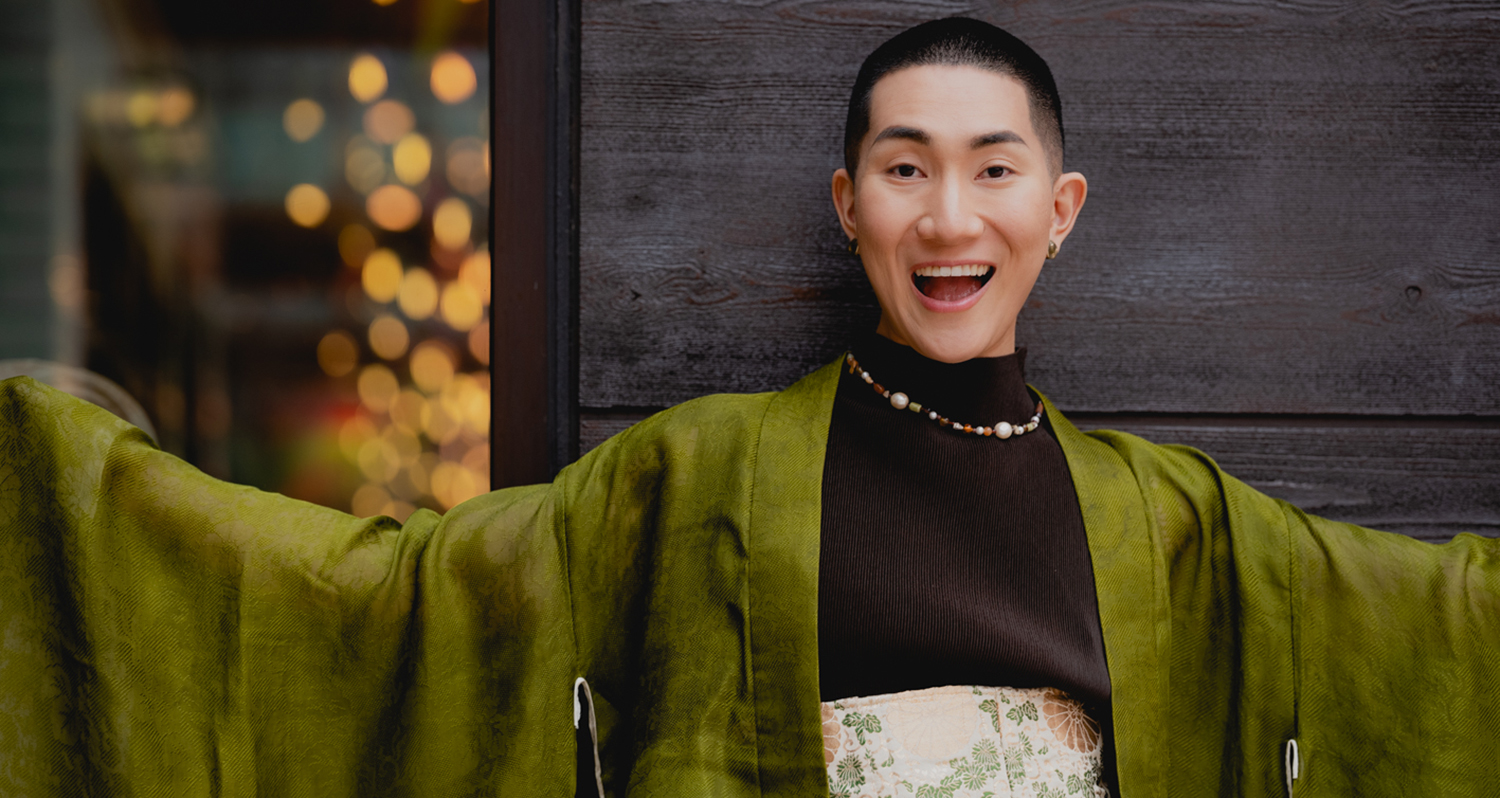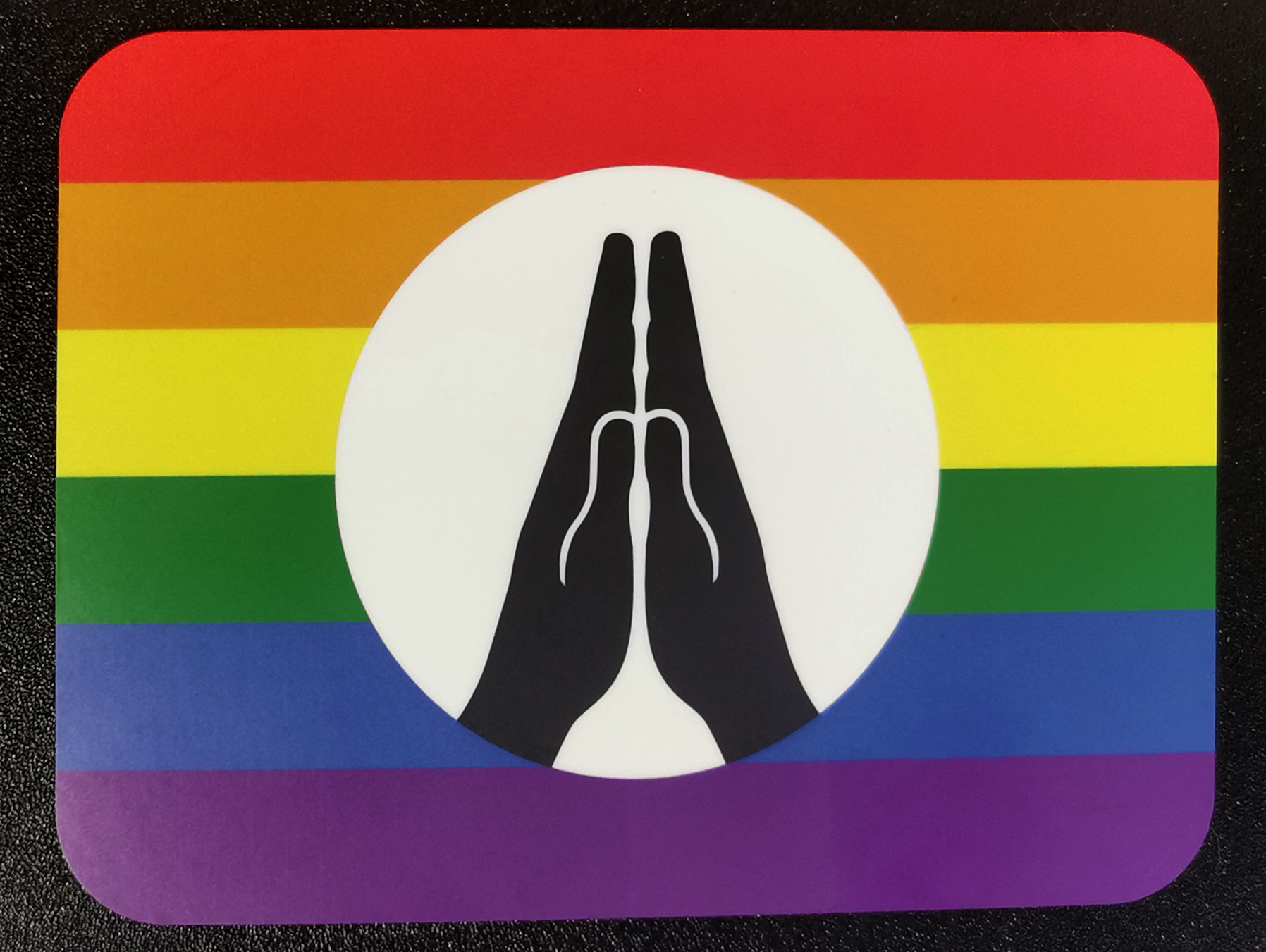Meet Kodo Nishimura: The man, the monk and the make up artist
One of Japan’s champions for LGBTQ+ rights discusses his memoir and spiritual guide, The Monk Wears Heels, being queer in Japan and his country’s slow progress towards equality

Words: Markus Bidaux, Images: Andrew Urwin and supplied
Like millions of others, my first exposure to the Japanese monk Kodo Nishimura was on an episode of Netflix’s Queer Eye: We’re in Japan, in which he appeared in a segment with Karamo Brown to give that episode’s hero some guidance.
The short clip of the 33-year-old wearing his formal monk robes in a park while discussing racism on gay dating apps propelled Nishimura to fame, especially after people learned that the softly spoken monk was also a high-heel-wearing makeup artist.
![]()
Kodo photographed at Pantechnicon by Andrew Urwin
When I meet Nishimura, he looks like a fashionista with a black beret atop his shaved head and dressed in a flowing outfit which he proudly points out includes one of his father’s old monk’s robes tied around his waist.
We are in Pantechnicon, a six-floor, Grade-II listed building in London’s Belgravia, which is filled with restaurants, cafés, and shops all influenced by Nordic and Japanese design and culture.
It hosted a series of events to launch Nishimura’s publication The Monk Wears Heels, although ironically for today’s interview he is wearing traditional Japanese sandals. Published earlier this year, the book is equal parts autobiographical, self-help, and spiritual guidance.
![]()
Kodo photographed with his book at Pantechnicon by Andrew Urwin
I’m not surprised that he has a little gift for me as this is a tradition in Japan. He hands me a rectangular sticker he recently designed with the Japan Buddhist Federation, which he describes as a “tiny United Nations of Japanese Buddhist schools”.
It features the Pride rainbow with two hands praying printed over the top. It was designed to be displayed in the entrances of temples to demonstrate their support and inclusivity of the LGBTQ+ community.

The Japan Buddhist Federation sticker Kodo helped design
Art and design are two of Nishimura’s passions. Before following in his father’s footsteps to become a monk and take over the family temple in Tokyo, at 21, Nishimura moved to New York City to attend Parsons School of Design.
After graduating, he became a makeup artist and fulfilled his dream of working on the Miss Universe competition as well as on cover shoots for the likes of Halle Bailey, the actress who is playing the titular character in the live-action remake of Disney’s The Little Mermaid, which is due for release next year.
Kodo playing dress up as a child in Japan
He tells me what a joy it was to paint the face of the new Ariel, a character he used to dress up as in his mother’s clothing as a child, with a skirt acting as long, flowing hair. Although he enjoyed exploring dressing up and drawing his female heroines, LGBTQ+ people were depicted in a negative and humiliating light in Japanese media, something that has hardly changed since, he tells me.
“LGBTQ people [in Japan] are really afraid and have almost given up that they can be accepted. I think it is coming from a lack of information. They think that they are wrong or corrupt.”
Nishimura carries on, “And that is really sad. I think 80 percent of LGBTQ people are not able to come out at their jobs. But what I learned in the US, and in Spain, when I travelled, is that there is nothing wrong. My professor at Parsons School of Design was gay, married, and he had a great job.”
Kodo working as a makeup artist at the Miss Universe competition
Although Nishimura uses he/him pronouns, he goes on to explain that he considers himself ‘gender-gifted’, a term I have to admit I had never heard before reading his book.
“I used to think that it’s a humiliation to call myself a homosexual,” Nishimura explains. “My soul, I don’t think it has a gender. I know my body is male, so biologically I’m a homosexual, but do I think I’m a man? I don’t know. But if I call myself gender-gifted, then I feel like I can give to others. I can be a bridge between many people. And eventually, I would like to help them think that we are actually more than just a sex. I think it’s a gift that I was given.”
After becoming a makeup artist, Nishimura moved back to Japan to attend five training sessions as a Pure Land Buddhist monk over a period of two years. The training is so strenuous that around a third of trainees quit.
The daily routine included waking up at five in the morning followed by cleaning in the freezing winters while wearing tabi sandals with no socks, followed by seven hours of classes, training, and chanting — a big shift from gossiping with Drag Race’s Carson Kressley at the Miss USA competition.
![]()
Kodo photographed at Pantechnicon by Andrew Urwin
As if the training was not difficult enough, Nishimura had to deal with harassment, too. He relays a story of what happened to him one day in a changing room.
“A guy from a rural area came up to me when I was about to put on my underwear and he said, ‘Oh, the first time I saw you I thought you were a fag.’ I thought, ‘What am I meant to say?’ Everybody’s changing or naked. And I started thinking about the Pride parade that I saw in New York, my gay professors, learning about Leonardo da Vinci, Tim Cook, and Yves Saint Laurent, and these people who are supporting me, so if I don’t change the situation with my voice now, Japan is never going to change. So, I said, ‘Yes, I am.’ And the guy was so surprised.”
Nishimura then told the man about his time in New York and working as a makeup artist, and the next time they crossed paths the man wished him luck. If only every encounter with a homophobe could be resolved so elegantly. Nishimura has now made it his mission to become an LGBTQ+ advocate and to spread the message globally.
Since appearing on Netflix’s Queer Eye, he has truly embraced this role, which has led to him speaking at the United Nations Population Fund, Stanford and Yale Universities, and with broadcasters such as the BBC and CNN. He was also selected by Time magazine as a Next Generation Leader.
![]()
Kodo photographed with Kan from Netflix’s Queer Eye: We’re in Japan at Pantechnicon by Andrew Urwin
Those are big heels to fill, but Nishimura does so with grace. It’s encouraging to witness someone using their fame as selflessly as he does and it begs the question of just how unique he is. Are there other, less vocal, LGBTQ+ monks in Japan?
“I know one transgender woman, but anybody else I know is hidden; they are discreet,” Nishimura confides. “The reaction when I was on different media… people told me ‘You’re not a real monk.’ That was one of the popular criticisms. But I think it’s because they only know one form of Buddhism, which is the Thai monks’, and they are told that this is Buddhism. But the essence of Buddhism, I think, is to help people. And if you aren’t sticking to the traditional image and being really strict about it, how are you helping other people? Because, according to Buddhism, it’s a sin to lie to your heart. I would like to liberate them, instead of limiting what they can do.”
Kodo during his monk training in Japan
So, if it is a sin to lie to your heart, what of marriage equality in Japan? Does he think it will ever happen?
“I visualise it,” says Nishimura, “I mean, there is not much hope if the law doesn’t allow people to get married. I’m really working towards helping politicians who are supporting LGBTQ rights to be elected. I do Insta lives with them and I help the organisations to arrange Pride marches in less accepting cities. From April, in Tokyo [same-sex couples] can apply for partnerships, but it’s not related to the national law. So, in the passport or in our family registry, it’s not going to make a difference. But it’s a big step.”
And naturally, Nishimura’s activism extends to Prides in Japan.
“In Japan, the Prides look almost like a protest and it’s really small.” He goes on, “It’s getting bigger and bigger, and more local areas are making Pride parades happen. I help them sometimes, walking together with the people in my monk’s robe because many people know me in Japan. It’s kind of frightening to see how the people react. Some people just pretend like they don’t see anything. Some kids wave at us. But if I wear the monk’s robe, I think it adds a different perspective and value to that parade.”
His native country’s march towards LGBTQ rights has been a slow process and Nishimura ponders why this is the case. “I think Japan is very quiet. There’s not so much violence or hate towards LGBTQ people and there are not many people who are really speaking about LGBTQ rights, either. It’s very muted.”
Kodo during his monk training in Japan
I ask him how he manages to be both a monk and a makeup artist.
“Parsons really taught me to have meaning in every expression that I create. It’s not only to apply makeup but to empower people regardless of their gender or sexuality. Why am I a Buddhist monk? Because I was born and I have this tradition that’s running in my family. And why do I combine these two? Because that’s kind of sensational and it can reach more people and it’s something that’s original to me. It’s something that only I can do.”
Before we part ways, I ask if there is a Japanese word that he thinks we should adopt in the West?
“Jishin — it means believe in yourself or trust in yourself, it translates as ‘confidence’. But confidence doesn’t mean that you’re able to do things, it doesn’t mean that you are skilled. Confidence means that you know yourself.”
Kodo Nishimura’s This Monk Wears Heels, published by Watkins Publishing, is out now
The Attitude September/October issue is out now.

